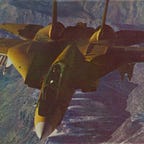Ukraine War, 24 Sep — 3 Oct 2022; Russian Counterattack on Kupyansk
Extremely busy, the last few days, and, I think, even the mainstream media has caught with developments in the Lyman area. Thus, guess, not that much need for my commentary.
Even now, I would like to get back to something that seems to have completely avoided wider attention.
Some might have paid attention that I’ve mentioned ‘Kupyansk’ the last week, but didn’t go into details. Some might recall that around the same time I’ve mentioned Ukrainians wondering why are the Russians even trying to counterattack - considering they are suffering massive losses every time they do. Now, while everybody was fully concentrating on events in the Lyman area (with a few good reasons no doubt), and most are still busy sorting out what was going on there, I would like to draw your attention at the area east of Kupyansk.
When one travels east from that town, there are three big villages creating an ‘arc’ around the eastern side of Kupyansk. From north towards south, these are Petorpavlivka, Kurylivka, and Kivsharivka. Petropavlivka is a particularly interesting place, stretching some 5–6 km from one to the other side and that along multiple roads that in turn are creating several ‘Us’, with opening towards the north-east and south-east. A very long, ‘big village’.
At least as important is the area further east: something like 10–15 kilometres of fields — all the way to the chain of villages the biggest of which are Orlyanske, Yahidne, and Kyslivka. In between, there are very few minor settlements and farms, no forests, few minor creeks. With other words: an ‘empty area’, just fields, fields, and yet more fields.
The exact flow of what happened in this area since Saturday, 24 September, and yesterday, is still unclear. Have got only a few first-hand reports providing superficial details and few videos, but the rest can be deducted to quite some degree: still, I find the ‘resulting impressions’ very interesting — and, potentially, highly important.
Around 20–21 September, what I — lacking info on exact designations — call the ‘Kupyansk Group ZSU’ (3rd Tank, 14th and 92nd Mech, Kraken Regiment, perhaps the Donbas Battalion, and few other units), completed mopping up eastern Kupyansk and then advanced further east and south, into Petropavlivka, Kurylivka, and Kivsharivka.
The Russians initially offered relatively light resistance, but: meanwhile, they have rushed the 3rd Motor Rifle Division — rebuilt with help of mobilised reservists without any training — and few other units from Belgorod, and then attacked, apparently, from east towards west. From the area around Arapivka, Volodymyrivka, and Kuzemivka, without any feints, without any diversions, with plentiful of air support and artillery support (that, however, was poorly directed) — straight over that empty area towards west.
Obviously, Ukrainians detected them early, brought their units in position, and brought in their artillery to bear.
Apparently, the first to go was the T-90s-equipped 27th Guards Motor Rifle Brigade. It attacked Kurylivka on 24 September, and lost a number of T-90s knocked out or abandoned in the process (even days later, Ukrainians were still collecting pieces of that unit around the battlefield). The next was a BTG of the 237th Tank Regiment, equipped with T-80s and BMP-2s taken out of storage. This attacked Petropavlivka and was completely smashed, sometimes on Sunday and/or Monday, 25–26 September. Think, somebody counted some 10–11 T-80s, a similar number of BMPs and MT-LBs, and about 40 other vehicles on just one video shown that battlefield on the ‘next morning’, but can’t find that link any more. Considering a Motor Rifle BTG can be expected to have a company of 10–11 MBTs, two or three companies of IFVs (like BMPs), and then similar-sized artillery support: as said, more or less an entire BTG was smashed there.
And still, these ‘1,5 BTGs lost’, were just a start.
On Tuesday, 27 September, the Russians went for Kurylivka again — with exactly the same result: lost another BTG. Then, think it was Thursday, they went for Kivsharivka — and promptly lost the next BTG. In these two clashes, Ukrainians actually let the Russians enter the villages, then attacked from several sides: the Russians run away — as far as they could: dozens were killed.
Perhaps some of battles in question lasted longer (the one for Kurylivka was something like a ‘chain of major clashes, lasting several days’), and, have no doubt: Ukrainians lost some, too. But, overall outcome of this show-down is clear: day after day, the 27th GMRB and the 3rd MRD were attacking, and attacking, and attacking, wave after wave — only to get smashed, literally, to pieces. They run into mines, they were hit by artillery, they were hit by Ukrainian ATGMs, then by tanks, and finally by infantry-operated light anti-tank weapons.
Finally, after decimating the 27th GMRB and the 3rd MRD (probably the 26th Guards Tank Regiment, too), and after mopping up the three battlefields, on 30 September the Kupyansk Group ZSU attacked towards east.
Apparently, they went down the P07 highway, towards Kotiyarivka and Tabaivka, in general direction of Svatove — but, also north of there, towards Orlyanske. How far they have reached by now, no idea: know only that the Russians have rushed yet more reinforcements from the Belgorod area. Indeed, word is that Putin ordered a BTG (or more?) of the Wagner PMC to this sector of the frontline.
However, gauging by the panic spread around the Russian social media, seems, Ukrainians came forward ‘too far’.
